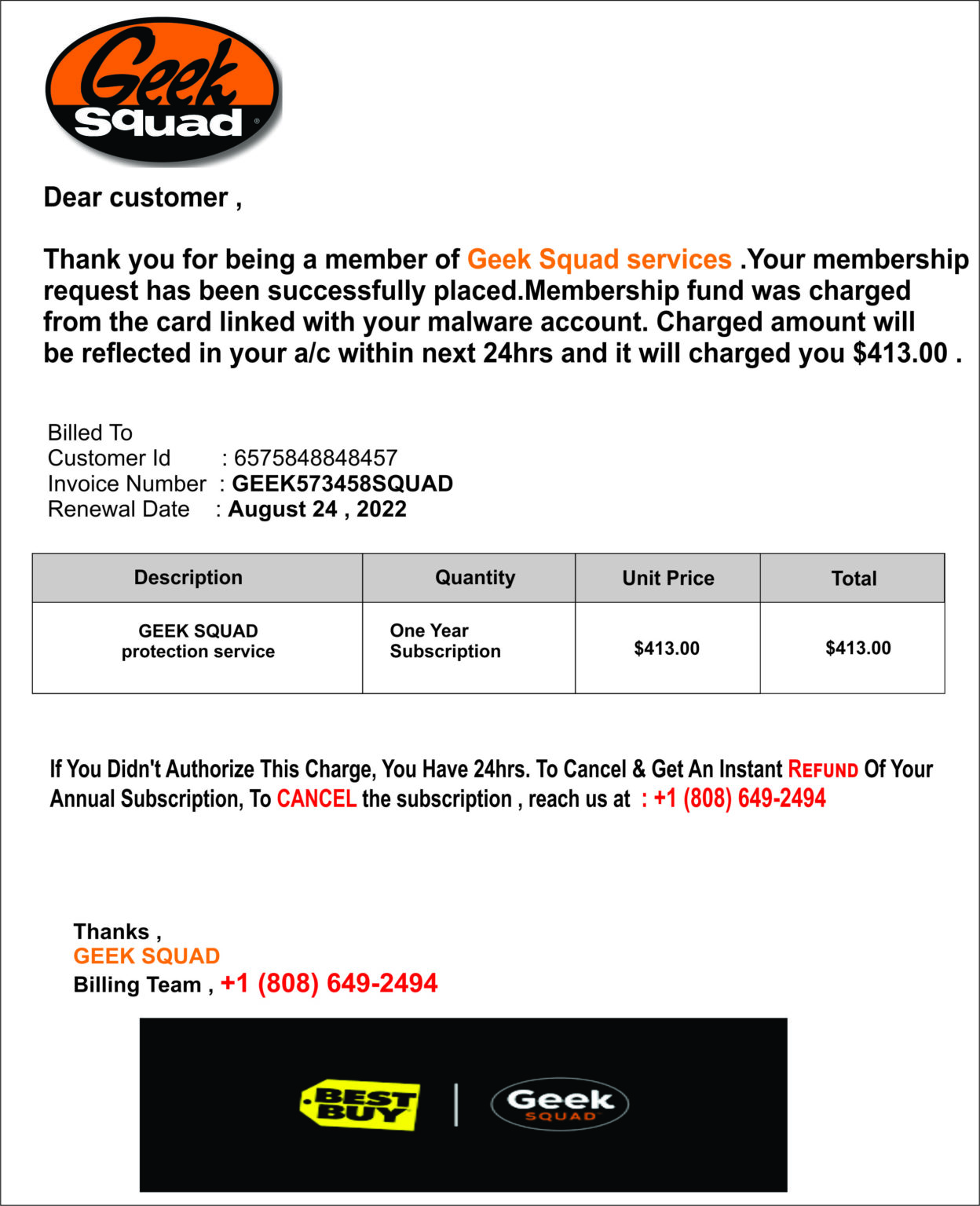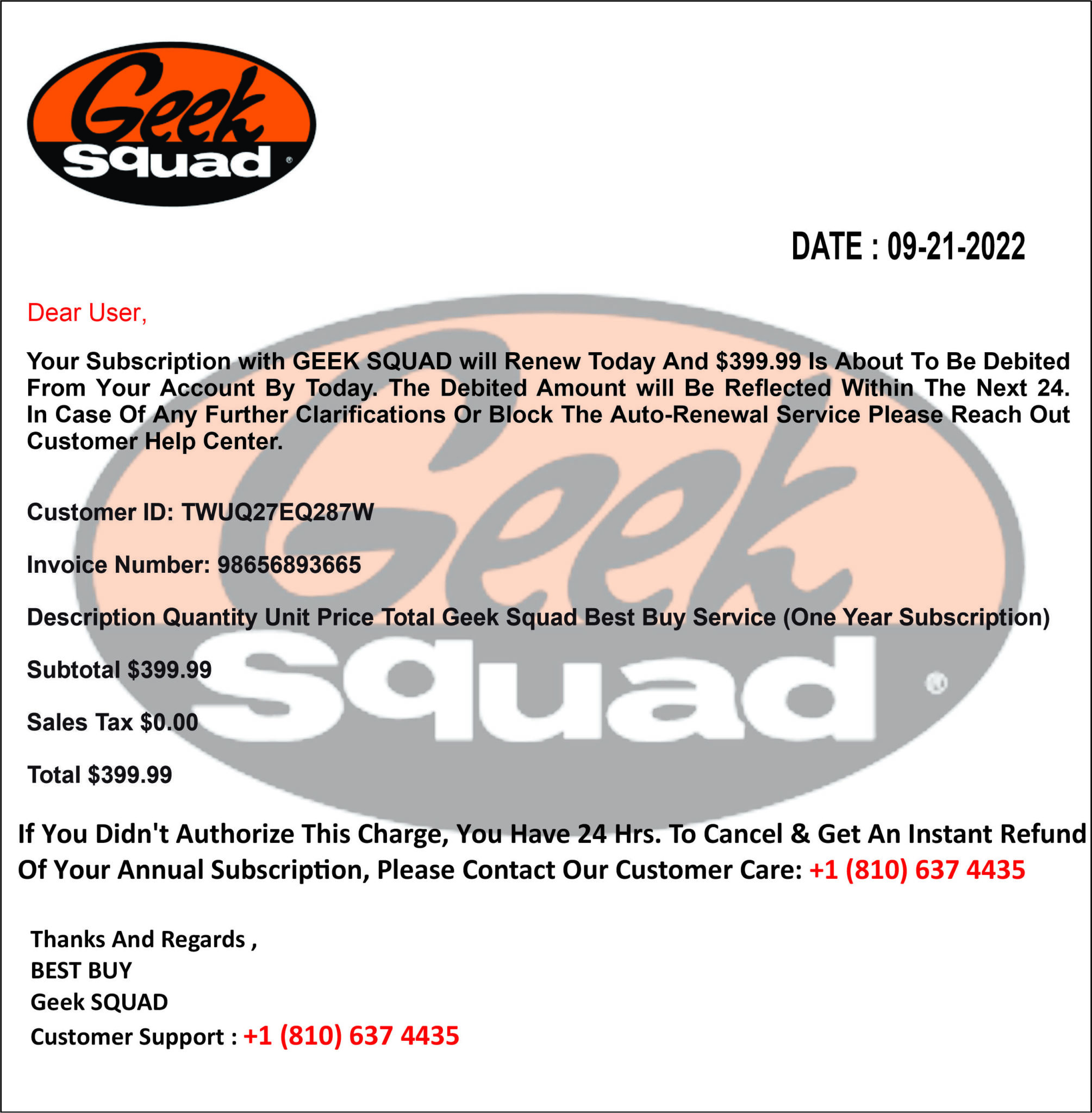Unveiling The Truth Behind The McAfee Invoice Scam
Listen up, folks! The McAfee Invoice Scam has been making waves online, and it's time we break it down for you. If you've ever received an unexpected invoice claiming to be from McAfee, don't panic—yet. This scam is real, and it's targeting innocent people like you and me. So, let's dive into what it is, how it works, and most importantly, how to protect yourself.
Nowadays, scams are getting smarter, and the McAfee Invoice Scam is no exception. Cybercriminals are using the trusted name of McAfee to trick people into paying fake invoices. But hey, don't worry. We're here to guide you through this mess and keep your wallet safe.
Whether you're a tech-savvy individual or someone who just uses their computer for emails and social media, this scam can affect anyone. So, buckle up and get ready to learn everything you need to know about the McAfee Invoice Scam.
What is the McAfee Invoice Scam?
Alright, let's start with the basics. The McAfee Invoice Scam involves fake invoices sent to unsuspecting victims, claiming they owe money to McAfee. These invoices often look official, complete with logos and legal jargon, making them seem legit at first glance. But here's the catch—they're not from McAfee at all.
These scammers prey on people's trust in well-known brands like McAfee. They send these fake invoices via email or even postal mail, hoping you'll fall for it. And trust me, they've got some sneaky tactics up their sleeves.
How Does the McAfee Invoice Scam Work?
So, how do these scammers operate? It's pretty simple, actually. They send out invoices that look like they're from McAfee, demanding payment for services you never signed up for. The invoices might claim you owe money for software licenses, support services, or even hardware you didn't purchase.
Here's the kicker—they provide payment instructions that lead to fake websites or bank accounts. Once you make the payment, your money is gone, and you've got no way to get it back. It's a classic case of cyber fraud, but with a McAfee twist.
Common Tactics Used in the McAfee Invoice Scam
Let's break down the common tactics these scammers use to dupe people:
- Phishing Emails: Scammers send emails that look like they're from McAfee, complete with official logos and branding.
- Urgency Tactics: They create a sense of urgency by claiming you'll face legal consequences if you don't pay immediately.
- Counterfeit Websites: They set up fake websites that mimic McAfee's official site to collect your payment details.
- Phone Calls: Some scammers even call you, pretending to be McAfee representatives, demanding payment over the phone.
Recognizing the Signs of a McAfee Invoice Scam
Now, how do you spot a fake invoice? Here are some red flags to watch out for:
- Unsolicited Invoices: If you receive an invoice for something you didn't purchase, it's a big warning sign.
- Spelling and Grammar Mistakes: Scammers often make mistakes in their emails or invoices, so keep an eye out for those.
- Urgent Language: If the invoice uses words like "urgent" or "immediate action required," it's likely a scam.
- Unofficial Payment Methods: McAfee wouldn't ask you to pay via Western Union or cryptocurrency, so be wary of such requests.
Why Do Scammers Target McAfee?
Good question. McAfee is a globally recognized brand, and scammers know people trust it. By using McAfee's name, they can easily trick people into believing the invoices are legitimate. Plus, McAfee offers a wide range of services, making it easier for scammers to create convincing fake invoices.
How to Protect Yourself from the McAfee Invoice Scam
Prevention is key when it comes to scams. Here's how you can protect yourself:
- Verify the Source: Always double-check the sender's email address. Official McAfee emails will come from a verified domain.
- Do Not Click Links: Avoid clicking on links in suspicious emails. Instead, go directly to McAfee's official website.
- Contact McAfee: If you're unsure about an invoice, reach out to McAfee's customer support for clarification.
- Install Antivirus Software: Having a reliable antivirus program can help detect and block phishing attempts.
Steps to Take If You Fall Victim to the McAfee Invoice Scam
Oops, you fell for the scam. Don't worry; it happens. Here's what you should do:
- Report the Scam: Contact your bank or credit card company immediately to dispute the charge.
- File a Complaint: Report the incident to local authorities and organizations like the FTC or Action Fraud.
- Monitor Your Accounts: Keep an eye on your financial accounts for any unauthorized transactions.
What Happens After Reporting?
Once you report the scam, authorities will investigate the case. While it may take time to recover your money, reporting helps prevent others from falling victim to the same scam.
Real-Life Examples of the McAfee Invoice Scam
Let's look at a couple of real-life examples to understand the impact of this scam:
John, a small business owner, received an invoice for $500 for McAfee software he never purchased. Thinking it was legitimate, he made the payment. It wasn't until his accountant reviewed the expenses that they realized it was a scam.
Jane, a retired teacher, got a phone call from someone claiming to be from McAfee. They told her she owed money for technical support services. She paid the amount, only to realize later that it was a scam.
Lessons Learned from These Stories
These stories highlight the importance of staying vigilant. Always verify the legitimacy of invoices and never give out personal or financial information over the phone or email.
Data and Statistics on Invoice Scams
According to a recent report by the Federal Trade Commission, invoice scams have increased by 40% in the past year. The average loss per victim is around $500, with some cases reaching thousands of dollars.
These numbers are alarming, but they also emphasize the need for awareness and education about such scams.
McAfee's Response to the Scam
McAfee takes these scams seriously and has issued statements warning customers about fake invoices. They encourage users to report any suspicious activity and provide resources to help identify and avoid scams.
Resources Provided by McAfee
McAfee offers several resources to help users stay safe, including:
- Security Tips: Guidelines on how to protect yourself from scams.
- Customer Support: A dedicated team to assist with any concerns or inquiries.
- FAQ Section: Answers to common questions about McAfee products and services.
Conclusion
Alright, we've covered a lot of ground here. The McAfee Invoice Scam is a serious issue, but with the right knowledge and precautions, you can avoid becoming a victim. Remember to verify the source of any invoice, avoid clicking suspicious links, and always contact McAfee directly if you're unsure.
So, what's next? Share this article with your friends and family to spread awareness. And if you've got any questions or experiences to share, drop them in the comments below. Together, we can fight these scammers and keep our money where it belongs—in our pockets!
Table of Contents
- What is the McAfee Invoice Scam?
- How Does the McAfee Invoice Scam Work?
- Common Tactics Used in the McAfee Invoice Scam
- Recognizing the Signs of a McAfee Invoice Scam
- Why Do Scammers Target McAfee?
- How to Protect Yourself from the McAfee Invoice Scam
- Steps to Take If You Fall Victim to the McAfee Invoice Scam
- Real-Life Examples of the McAfee Invoice Scam
- Data and Statistics on Invoice Scams
- McAfee's Response to the Scam



Detail Author:
- Name : Justyn Heaney
- Email : emilia05@gmail.com
- Birthdate : 1984-03-16
- Address : 5741 Fredrick Hills Port Wilfred, PA 98335-9570
- Phone : (417) 344-2737
- Company : Kuvalis, Spencer and Schimmel
- Job : Bridge Tender OR Lock Tender
- Bio : Et eveniet ut et dolor omnis nam reprehenderit. Placeat dolore modi debitis. Delectus animi et qui dolor.